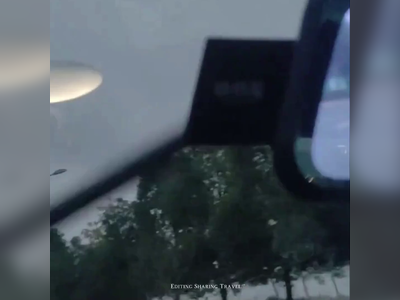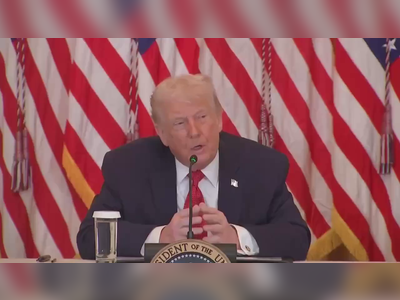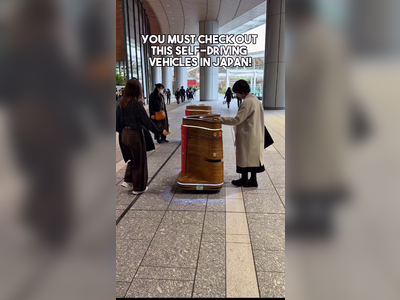Hands on: Samsung Galaxy S20 Ultra review
Samsung Galaxy S20 Ultra two-minute takeaway
The Galaxy S20 Ultra is Samsung’s biggest Android phone, and its most daring sales pitch: you can own the world’s most advanced 5G phone, with the company’s best camera to date – if, that is, you’re prepared to spend more money than ever on a non-foldable smartphone.
The Ultra is all about three things: a massive 6.9-inch 120Hz display that will stretch your hand, a quad-lens rear camera array offering insane zoom levels and 8K video recording, and 5G antennas that enable higher peak speeds than even the new Galaxy S20.
We tested the S20 Ultra’s 108MP camera for an hour, and were left impressed for several reasons. It captured so much detail in good light that we could crop in on images without losing quality – at least not as much quality as we’d lose cropping a photo from last year’s 12MP Galaxy S10 and S10 Plus cameras.
The 48MP telephoto lens allowed us to get up close and personal with far away subjects thanks to a 10x optical and 100x digital zoom. For context, it far surpasses the 2x optical and 10x digital zoom of previous Samsung phones, and the limited 6x digital zoom on the iPhone 11 Pro. At 100x, we were able to examine our videographer’s nostrils from 50 feet away – yes, it gets really close.
Don’t get fooled by the numbers game: the ‘lesser’ S20 and S20 Plus use a superior-sounding 64MP telephoto camera and have larger individual pixels, but the Ultra’s main and telephoto cameras use bigger sensors, and that’s more important for absorbing more light. Its 12MP ultra-wide camera is the same across the board on the S20 series, but it too has a larger sensor than the 16MP Galaxy S10 telephoto lenses. More on this in the Cameras section below.
Samsung continues to offer the most robust camera app of all the big camera phone brands, and with the S20 series it answers that everyday question: should I take photos or a video? Take both. Its new ‘single-take mode’ captures a variety of shots over a 10-second span: photos, ultra-wides, portraits, hyperlapse video, regular video, etc. It kept us out of the settings menus and in the moment.
The S20 Ultra’s specs rival those of laptops, meaning it’s more than you’ll ever need: up to 16GB of RAM, a 7nm chipset, and up to 512GB of internal storage. There’s also a hulking 5,000mAh battery for pulling down battery-intensive 5G signal and an in-screen fingerprint sensor carried over from last year’s phones. However, the S20 series also have the dubious honor of being the first S phones without a headphone jack.
It’s impossible to justify the Galaxy S20 Ultra price for everyone – even those who bought the S9 Plus or S10 Plus, and intended to get the next ‘big one’ from Samsung. The S20 Plus is more than enough phone for most upgraders, and even that gets a price hike over the S10 Plus.
For others, though, the word ‘upgrade’ means a completely different thing: they want a phone that pushes new boundaries, and they don’t mind if that pushes the price tag further into Galaxy Fold territory. It’s Samsung’s own version of Tesla’s ‘Ludicrous Mode’ in its electric cars, and they’ll love showing off how its cameras go from 0.5x to 100x zoom real quick.
Samsung Galaxy S20 Ultra release date and price
The Samsung Galaxy S20 Ultra release date is Friday, March 6 in the US, Australia and UAE, or March 13 in the UK, alongside the S20 and S20 Plus. So you have a bit of time to save up, although Australian and UAE pre-orders open right away on February 12 and in US shortly after that on February 21, a few days before the MWC 2020 mobile extravaganza.
The extra time might not mean anything if you can’t come up with the funds though. The S20 Ultra costs a staggering $1,399 / £1,199 / AU$1,999 / AED 4,499 – and that’s just for the version with 128GB of internal storage and 12GB of RAM.
If you feel like you may need 512GB of onboard storage and a mind boggling 16GB of RAM it'll be $1,599 / £1,399 / AU$2,249 / AED 5,399.
Some good news though: you’re probably not going to need to max-out the storage, given our move to the cloud and, as the 5G becomes available, the inclusion of 5G connectivity to easily pull down remotely stored data. Plus, all models of the S20 have a microSD slot for expandable storage up to 1TB in case you do hit the 128GB capacity.
Screen and overall size
Samsung’s 6.9-inch display will push the boundaries of your fingers’ reach and your thumb’s dexterity, yet it won’t feel much bigger than the S10 Plus – its width is actually a tad smaller than the 6.8-inch Note 10 Plus and 6.7-inch Galaxy S10 5G.
It’s just that the Galaxy S20 Ultra is noticeably taller, not wider, expanding to a 20:9 aspect ratio. You can still grip it with one hand, and shove it in a deep-enough jeans pocket – just know that you’ll have to operate it with two hands to comfortably access all corners of the display. It’s big, just not as big as its 6.9-inch screen size suggests.
We found the Super AMOLED display big, bright and pixel-dense at its 3200 x 1440 resolution, and it looked perfectly fine at the default 1080p resolution. It’s likely to save battery life in this smaller resolution and, spoiler, it’s the only way to experience the new 120Hz screen refresh rate. It’s not QuadHD compatible.
The S20 Ultra isn’t a pure gaming phone, but it matches the Asus ROG Phone 2 and Razer Phone 2 with a silky-smooth 120Hz refresh rate, doubling the 60Hz on a majority of today’s handsets. Samsung is also emphasizing that touch sensitivity has doubled, from 120Hz to 240Hz, when you’re gaming, which should make fast-paced mobile games feel more responsive.
We appreciate that Samsung has settled on a smaller punch-hole for the front-facing camera in the top-center of the screen. Say goodbye to that wide dual-lens selfie camera from the S10 Plus, as there’s only one selfie camera embedded in this display. Software handled the depth fine, which casts doubt on why you need a depth camera on the back of the Ultra and Plus.
We haven’t had the Galaxy S20 Ultra in our hands long enough to know how it’ll feel during everyday use, but we have, in the past, been consistently wowed with Samsung’s screen-to-body ratio, brightness levels and support of new display standards such as HDR10+. Going on early impressions we’re getting more of the same here, only with a few more pixels to fill that taller screen size.
Design
The Samsung Galaxy S20 Ultra is made of glass and aluminum – there’s no ceramic version this year – and comes in just four colors: Cloud Pink, Cloud Blue, Cosmic Gray and Cosmic Black. There’s still a curve on the right and left edges of the screens, but it’s much less pronounced this time, which should mean fewer accidental presses of the screen.
We’ve talked about the tall-not-wide dimensions (166.9mm x 76mm), so now let’s talk about the girth and weight. At 8.8mm, the Ultra is noticeably thicker than the other S20 phones and all of the S10 phones (those range from 7.8mm to 7.9mm), and it has a sizable rear camera bump on top of that. Both are completely okay with us.
It’s also heavier at 220g (roughly in between the S10 Plus at 175g and the Galaxy Fold at 276g). But again, to us, this is a completely favorable trade-off given the fast 5G mmWave technology, 108MP camera, and 5,000mAh battery that are packed into this cutting-edge smartphone.
Too many times, camera team leads from various phone makers have told TechRadar “we would’ve fit in a better camera, but the design team won” – that’s a direct quote from one of them. The Galaxy S20 Ultra, thankfully, doesn’t sacrifice camera quality in order to look extra chic. It’s big, but it looks stylish enough – and more people will see your glorious 108MP photos than your phone anyway.
Five cameras
We could write a whole review of the Samsung Galaxy S20 Ultra’s cameras, there’s so much to say about them – and that’s good news if you want something fresh out of your smartphone’s photos. But this is just a hands-on review, and there’s so much more to test before we publish our full review. Wish us luck.
The S20 Ultra has a 108MP f/1.8 main camera (with 0.8-micron pixels), a 48MP f/3.5 telephoto camera (0.8 microns), and a 12MP f/2.2 ultra-wide camera (1.4 microns). There’s also a time-of-flight (ToF) depth camera on back aiding portrait photos and 3D scans, and a 40MP selfie camera on the front. It’s Samsung’s biggest camera sensor upgrade since the Galaxy S7 and S7 Edge.
Wondering why you suddenly need a 108MP camera? It makes sense for the same reason that recording 8K video is often a good idea, even if you don’t own anything more than a 4K TV: it makes it much easier to crop into a photo or video without sacrificing detail. It gives you latitude when you’re editing your creations, even if you ultimately output to 12MP and 1080p.
There’s a downside to inflated megapixel counts though: the individual pixels are often smaller. We’ve seen that on plenty of cheap Android phones that tout 48MP and 64MP cameras with deceptive marketing, only to perform poorly in low light.
The S20 Ultra does have smaller pixels at 0.8 microns, whereas the S20 and S20 Plus push the pixel size to 1.8 microns (up from the S10 series’ 1.4 microns). But there are two things going for the Ultra that should make up for those smaller microns.
First, Samsung is employing something called nona-binning technology, which combines nine pixels into one to increase the pixel size to 2.4 microns in low-light situations, and leaves you with 12MP photos (the 9-to-1 math on a 108MP camera checks out).
We’re eager to test this out in the example scenario Samsung describes: you’d be able to shoot stunning 108MP landscape photos outdoors in sunny Egypt, but head inside the pyramids and you’ll get pixel-binded 12MP photos. Stay tuned for our full review, while we try to persuade our boss to sign off on our trip.
Second, the S20 Ultra has a chance to wow us with its physically larger camera sensors, especially from that 1/1.33-inch main sensor and 1/2-inch telephoto sensor. We’re likely to see less noise from nighttime photos on account of these physically bigger sensors that can absorb more light. But that’s going to require more testing in our full S20 Ultra review.
8K video and Samsung’s single-take mode
The Samsung Galaxy S20 Ultra camera introduces 8K-resolution video recording, and its Super Steady stabilization now incorporates anti-rolling correction (up to 60 degrees).
But, as we discovered, you can’t get both 8K and Super Steady at the same time. In fact Super Steady didn’t work in 4K either. It’s still a 1080p affair. And 8K is limited to 24fps, so you’re not going to get all the bells and whistles you do with 4K and Full HD video.
8K is going to allow you to crop and edit video without sacrificing quality, while 4K will give you more frame-rate and zoom versatility – you get 20x video zoom, whereas you’re stuck at 6x in 8K. To give you some storage requirement context, 8K video files will eat up about 600MBs per minute of footage in the HEIC format (and every 8GB it’ll start a new file) – we say that just in case you’re deciding between the 128GB and 512GB versions of this phone.
Samsung’s camera app continues to be the best out there, balancing a robust feature-set with ease of use. You can swipe anywhere on the screen to flip between the front and back lenses, make a hand gesture to trigger the selfie camera timer, and double-press the lock button to launch the camera app without having to look at the screen.
We had the most fun with the new ‘single-take mode’, which cycles through the four rear cameras and some of Samsung’s 13 modes, then picks the best shots. It feels like this is more than a gimmick, and we hope other phonemakers adopt something similar.
We didn’t get a chance to test night-time hyperlapse (it was daytime), but Samsung says this has been enhanced to capture light trails. Certainly we’ll have a lot more to say about the cameras in our final Samsung Galaxy Ultra review.
5G, battery life, specs and software
For most people buying the Galaxy S20 Ultra it’s likely to be their first 5G smartphone – just 1% of phones that shipped in 2019 were 5G devices, so it’s still very new tech. Like the S20 Plus, the Ultra combines sub-6 and mmWave technology to offer the fastest peak download speeds. The S20 is outfitted with just sub-6, and it won’t be sold by Verizon, an mmWave-exclusive carrier in the US, for this reason.
So how fast will 5G be on the S20 Ultra? Our 5G speed test using the Galaxy S10 5G on Verizon in May 2019 returned download speeds of 1.4Gbps – but we did have to be outdoors and close to a 5G node on top of a lampost to make that happen. mmWave is extremely fast but incredibly limited in range, whereas sub-6 is slower (ranging from 200Mbps to 500Mbps) but has a wider range, offers a more reliable connection and works indoors.
The S20 Ultra and S20 Plus combine these two technologies, which futureproofs your access to 5G. The main advantage in terms of 5G that see from the S20 Ultra is the 5,000mAh battery, versus the 4,500mAh battery in the S20 Plus, as 5G hogs battery life.
The rest of the internal specs are all top-of-the-line: a 7nm chipset (Qualcomm’s Snapdragon 865 in the US or Samsung’s Exynos 990 in the UK and Europe), 12GB or 16GB or RAM, 128GB or 512GB of internal storage, and a microSD card slot for expandable storage.
Samsung’s ‘Super Fast’ charging returns on the S20 Ultra, up to 45W with an optional charger and 25W with the charger included in the box. That mirrors what we saw on the Galaxy Note 10 Plus, as does the Ultra’s fast wireless charging prowess of up to 15W.
We did dive into Samsung’s One UI 2.0 software long enough to find Google Duo integrated directly into the dialer app. You’ll be able to make Full HD video calls and chat with up to eight people. We’ll continue to explore Samsung’s reskinned Android 10 interface when we get the phone back in for our full review.
Early verdict
You’re going to see a lot of reviewers chastise the S20 Ultra for being big, heavy and expensive – and it is all of those things. But Samsung has also designed the Ultra to be an absolute powerhouse, without compromise – and it’s shaping up to be just that.
So here’s some wise advice: you shouldn’t buy the Galaxy S20 Ultra if it’s too big for your hand or you can’t afford it, and that may be true for most people. However, it’s nice to see a phone that doesn’t hold back.
Samsung is offering something new that pushes the boundaries of smartphone camera and connectivity technology like we’ve never seen before. We’re eager to test out the 108MP camera to see how big of a difference it makes, and burn through gobs of data on 5G using both mmWave and sub-6-capable networks.
This is poised to be the superior smartphone of early 2020, at least when it comes to our technical (not value) rankings.





















